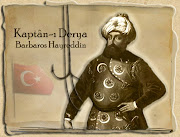
In 1510, after Bejaïa was conquered by the Spaniards, Algiers became dependent on catholic Spain. To escape destruction, the city authorities abandoned one of the islands facing the city to Spain (El Peñon de Argel). It is D. Diego de Vera, commander of the Mediterranean sea fleet which was in charge of occupying an building a fortress on the small island of the Beni-Mezrena Medina.
It is thus with the "assent" of Algiers inhabitants that supplied the necessary materials and worked even with the Spanish soldiers that this castle was built. Forced, in 1511, El-Djazaïr signed a treaty recognizing the autonomy of the Penon. The loss of the authority of the city on the Penon was then felt in a rough way.
After Ferdinand the Catholic died in 1516, the king of Algiers tried to escape a treaty engaging him to pay an annual tax to Spain ; Selim Etteumi appealed to the Ottoman-Greek pirate Arudj (Arroudj) Barbarossa to dislodge them. After numerous attempts of reconquest, Arroudj gave up the power. His brother Khayr al-Din took over him and thirteen years later in 1529 he destroyed the Penon after a strong attack.
The Peñon fortress was completely destroyed with the the exception of two towers. A part of the Spanish occupants was killed and the other took as slaves.
Christians were then enlisted to take charge with filling the channel separating the island from the continent. A Mole of 200 meters long, 25 meters wide and 4 meters high was built. The mole marked then the beginning of the naval base of the Regency.
In 1541, under the government of Hassan Pacha a tower, which shelters the current lighthouse, was built on the ruins of El Penon. The mole will then experience numerous modifications during the Ottoman and French occupation to become what is called today the Admiralty. Its shelters nowadays barracks of the navy.





